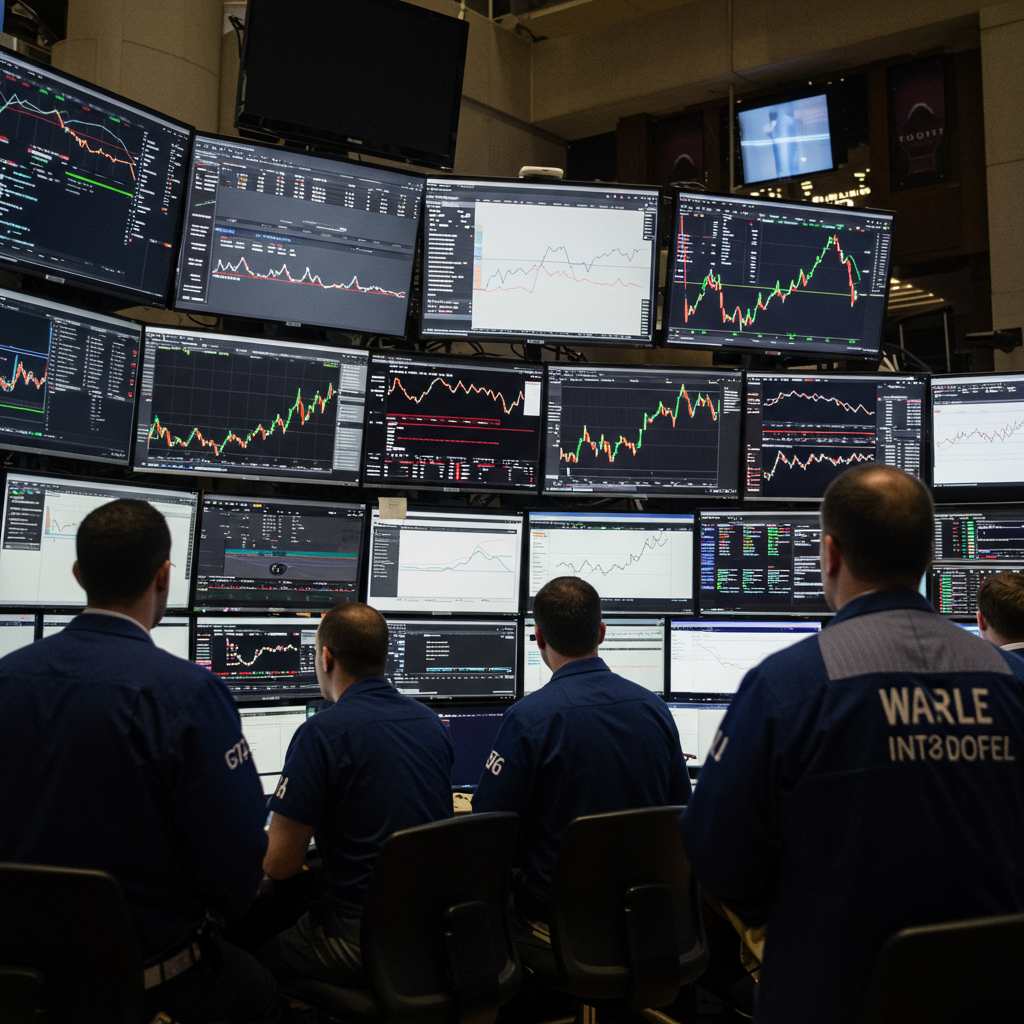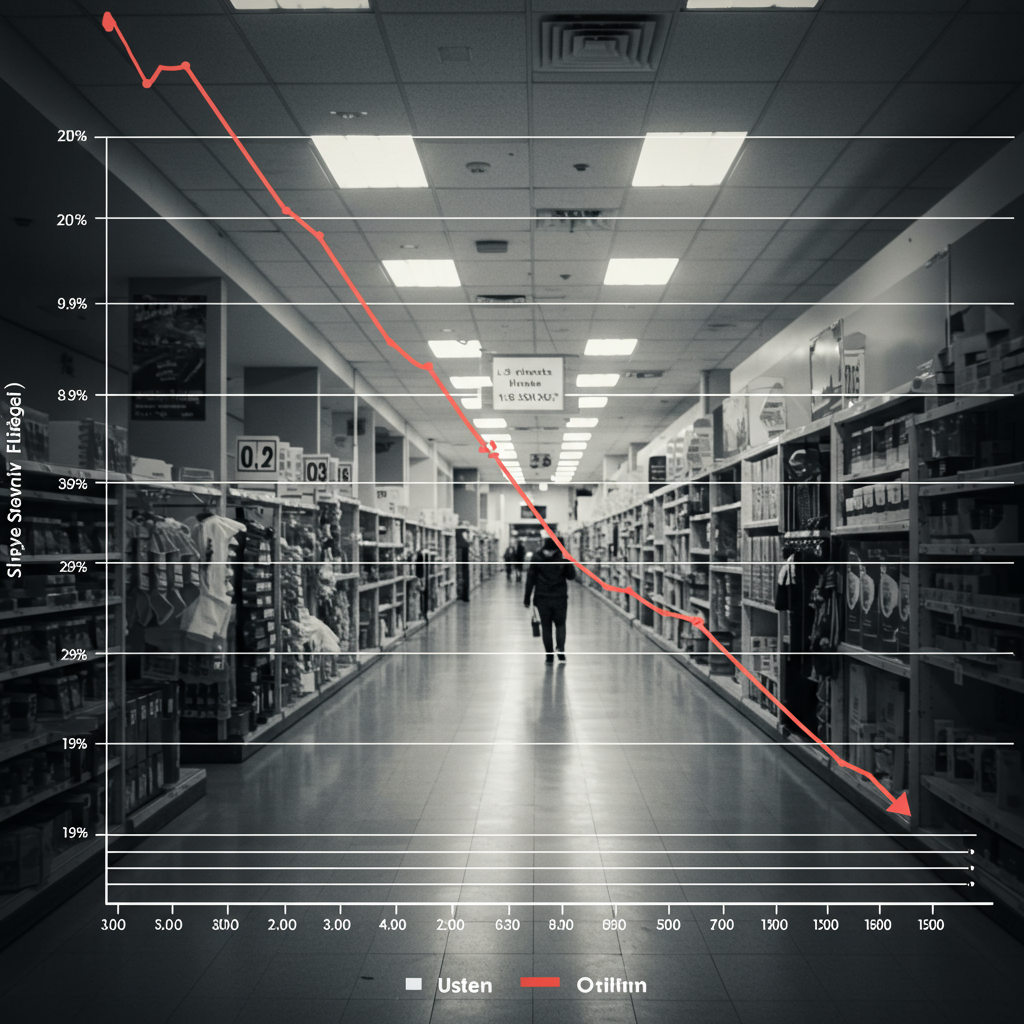The Wall Street landscape in mid-July 2025 presented a complex interplay of optimism and underlying concerns, characterized by significant shifts in major indices. While the market saw a notable bullish surge towards the end of the period, particularly on July 23rd, earlier in the month, mixed signals and geopolitical tensions created a more volatile environment. Investors keenly tracked corporate earnings from tech giants like Google and Tesla, alongside crucial trade developments and inflation data. This period underscored the market’s dynamic response to both corporate performance and macroeconomic policy.
Mid-July Market Dynamics: A Snapshot
Entering the second half of July 2025, the U.S. stock market demonstrated remarkable resilience. On July 23rd, the Dow Jones Industrial Average, S&P 500, and Nasdaq Composite all posted gains, with the Dow climbing 250 points (0.6%) and the S&P 500 rising 0.4%. The tech-heavy Nasdaq Composite secured a 0.3% increase, fueled by anticipation. This bullish momentum was largely attributed to a significant trade agreement finalized between the United States and Japan. Earlier in the month, around July 14th and 15th, performance was more varied. While the Nasdaq Composite achieved new record highs, the Dow Jones Industrial Average experienced declines, reflecting a “tale of two markets” as technology stocks soared while financial sectors faced headwinds.
The Game-Changing US-Japan Trade Agreement
A pivotal catalyst for the market’s strong performance on July 23rd was the new trade deal between the United States and Japan. Signed in Tokyo by President Donald Trump, this comprehensive agreement was hailed as a win for global trade and U.S. manufacturing. Key components of the deal included a reduction in auto tariffs to 15% and a substantial Japanese commitment of $550 billion for investment in American manufacturing and infrastructure. Furthermore, a renewed five-year economic cooperation framework was established, focusing on tech innovation, supply chain resilience, and AI research.
This breakthrough immediately boosted global markets, with Japan’s Nikkei index jumping 3.5% and Europe’s Euro Stoxx 600 rising nearly 1%. The automotive sector was a significant beneficiary, with Japanese automakers like Toyota and Mazda experiencing rapid premarket gains. Honda Motor rallied 10.5%, Stellantis gained 5.9%, and General Motors saw a 2.1% increase. This reduction in trade tensions also fostered optimism regarding the Federal Reserve’s monetary policy, raising hopes for potential interest rate cuts later in the year.
Tech Titans Under the Microscope: Tesla and Alphabet Earnings
A major focus for investors throughout this period was the upcoming Q2 earnings reports from Tesla (TSLA) and Alphabet (GOOGL), scheduled for after-market hours on July 23rd. These reports were expected to heavily influence market sentiment and set the tone for the broader tech sector.
For Tesla, analysts anticipated a potential year-over-year revenue drop exceeding 10%. Investors were keenly watching for updates on crucial areas like electric vehicle (EV) demand, the progress of Cybertruck production, and the deployment of its ambitious robotaxi initiatives. Commentary from Elon Musk regarding Tesla’s strategy in the China market and advancements in its AI software development also drew considerable attention. Tesla shares were noted for their inherent volatility heading into these earnings announcements.
Alphabet was projected to deliver solid growth, particularly in its advertising and cloud services divisions. YouTube ad revenue and Google Cloud profits were key metrics for analysts. Additionally, updates on the rollout and performance of Alphabet’s Gemini AI were eagerly awaited, as the company continued to ramp up its artificial intelligence efforts. These tech giants remained central to driving growth across major sectors, including technology, energy, and electric vehicles, underscoring their critical role in the overall stock market today performance.
Navigating Tariff Threats and Inflationary Pressures
While the end of July brought trade optimism, earlier in the month, markets contended with renewed trade tensions. On July 14th, President Trump announced new 30% tariffs on goods from the EU and Mexico, effective August 1st. These threats created a backdrop of uncertainty, testing the market’s previous ability to shrug off escalating trade conflicts. Morgan Stanley’s chief investment officer, Mike Wilson, suggested that while a “Trump always chickens out” (TACO) trade might be at play, the more material trade-related risk for equity indices resided in a significant increase in tariffs on China, especially in technology and semiconductor categories.
Inflation also remained a persistent concern. The June Consumer Price Index (CPI) report, released on July 15th, was crucial for gauging how earlier rounds of tariffs were impacting prices. The report showed a 0.3% month-over-month increase in line with expectations, but the year-over-year CPI gained 2.7%, accelerating from May’s 2.4%, driven by higher food and energy costs. Jeffrey Roach, chief economist for LPL Financial, predicted that “Inflation pressure will likely remain acute for the rest of the summer,” although he expressed optimism for stabilization later in the year as consumer demand slows.
A Tale of Two Markets: Tech Soars, Financials Slump
On July 15th, the stock market today exhibited a clear divergence. The Dow Jones Industrial Average fell 436.36 points (0.98%), largely due to weakness in financial stocks. The S&P 500 also saw a modest decline. In stark contrast, the Nasdaq Composite surged, adding 0.18% to reach a record close, after hitting a 52-week high. This “tale of two markets” saw the market capitalization-weighted S&P 500 and Nasdaq indexes rise, fueled by robust performance in technology and consumer discretionary sectors. Key winners included AI chipmaker Nvidia, Microsoft, Apple, and Amazon.com, all of which continued their upward trajectory. Nvidia, Broadcom, and Coinbase all hit new highs, with CoreWeave also seeing a significant gain after announcing a $6 billion data center project.
Conversely, the Dow, which includes a significant weighting of financial stocks (20% of its total), slumped. All its financial components, including JP Morgan Chase, Goldman Sachs, and Visa, closed lower. This weakness was partly attributed to concerns surrounding the Federal Reserve’s leadership and independence.
Federal Reserve Leadership and Investor Confidence
A major contributing factor to the dip in financial stocks was the revelation from Treasury Secretary Scott Bessent that the process to choose a successor to Fed Chairman Jerome Powell had begun. Bessent suggested Powell should resign when his chairman term ends next May, though his governor term extends until 2028. This news triggered concerns about the vital independence of the Federal Reserve. JP Morgan Chase CEO Jamie Dimon emphasized that “the independence of the Fed is absolutely critical” and warned that “playing around with the Fed can have adverse consequences.” This historical context, recalling past instances where political interference undermined Fed credibility, underscored investor anxiety regarding potential shifts in monetary policy autonomy.
Beyond the Headlines: Other Market Movers
Beyond the primary drivers, several other factors influenced the broader stock market today in mid-July. The market witnessed an unexpected return of “meme stock mania” on July 23rd, with retail-favorite stocks like GoPro (+50%), Krispy Kreme (+40%), and Kohl’s experiencing significant double-digit gains. These surges were driven by heavy retail trading volume, viral social media buzz, and short squeezes, mirroring the 2021 retail trading craze and introducing a potential source of increased market volatility.
Bitcoin also briefly spiked above $123,000 for the first time, signaling investor optimism tied to Congress’s “Crypto Week,” which aimed to yield new crypto-friendly stablecoin legislation. Stocks with significant crypto ties, such as Coinbase and Robinhood, rallied in response. Oil prices also climbed over 1% on expectations that improved trade relations would boost global demand.
Investor Outlook and Future Watch
Looking ahead, market strategists offered varied but generally optimistic outlooks. RBC Capital Markets boosted its year-end S&P 500 target to 6,250, while Ed Yardeni of Yardeni Research set a higher target of 6,500, suggesting that the recent V-shaped recovery in stocks could soon morph into a “square-root shaped pattern”—a rapid rise followed by a plateau. However, caution remains, with lingering concerns about potential volatility post-Tesla and Alphabet earnings, weakness in the broader chip sector (as seen with Texas Instruments’ recent drop), and unresolved trade tensions with Europe and China. European officials were reportedly seeking counter-deals with Washington, with negotiations possibly commencing later in the week.
Frequently Asked Questions
What key factors drove the US stock market in mid-July 2025?
The U.S. stock market in mid-July 2025 was primarily driven by a combination of significant corporate earnings anticipation, especially from tech giants Tesla and Alphabet, and a landmark trade agreement between the United States and Japan. This deal reduced trade tensions and boosted investor confidence, particularly in the automotive sector. Earlier in the month, renewed tariff threats from President Trump and crucial inflation data from the June CPI report also played a role, creating periods of mixed performance and sector divergence.
How did the US-Japan trade deal impact specific market sectors?
The US-Japan trade deal had a profoundly positive impact, especially on the automotive sector. Japanese automakers like Toyota and Mazda saw significant premarket gains, with shares increasing between 10% and 17%. Other major auto companies like Honda Motor, Stellantis, and General Motors also experienced notable boosts. Beyond autos, the reduction in trade uncertainty fostered broader optimism, contributing to gains across the Dow Jones, S&P 500, and Nasdaq Composite, and positively influencing expectations for global demand and monetary policy.
What major economic data and events should investors monitor in late July 2025?
Investors should closely monitor several key events following the mid-July developments. Critical upcoming items include the Q2 earnings reports from Tesla and Alphabet, which were due shortly after July 23rd. Beyond these, the market will be keenly watching for broader economic data, specifically the upcoming GDP and inflation reports scheduled for July 25th. The Federal Reserve’s next interest rate decision, slated for July 31st, will also be a major determinant of market direction, influenced by the latest economic data and trade developments.
Conclusion
The stock market today in mid-July 2025 demonstrated the powerful influence of both corporate performance and geopolitical events. The bullish momentum driven by the US-Japan trade deal and strong tech earnings expectations provided a significant uplift, countering earlier concerns stemming from tariff threats and persistent inflation. While major indices touched new highs, the divergence between soaring tech stocks and declining financial sectors highlighted underlying complexities and specific investor anxieties regarding Federal Reserve leadership. As the month concluded, the market’s continued upward trajectory remained heavily dependent on the performance of key tech giants and central banks’ responses to evolving macroeconomic data. Investors must remain vigilant, analyzing these intertwined factors to navigate the shifting market landscape.




